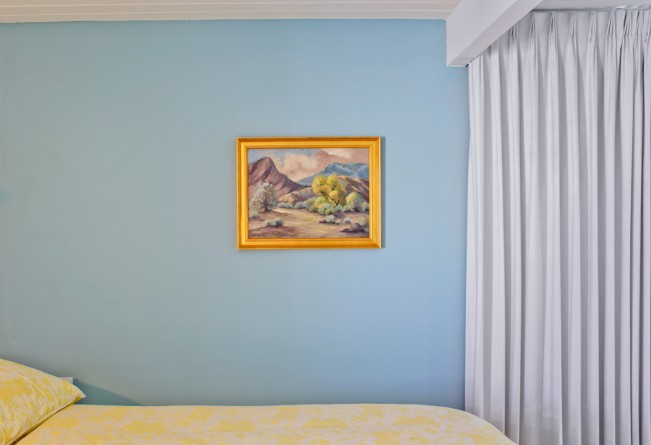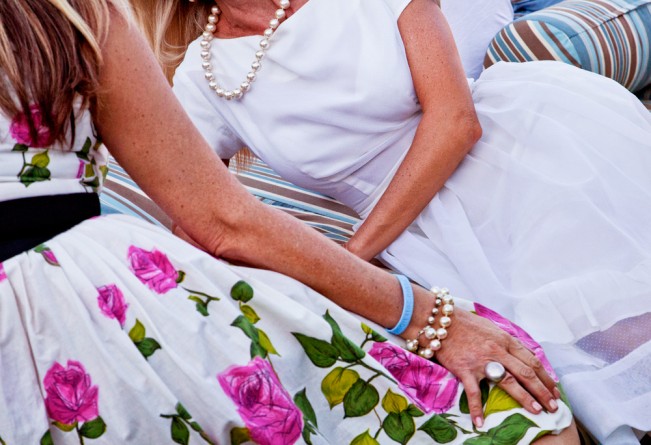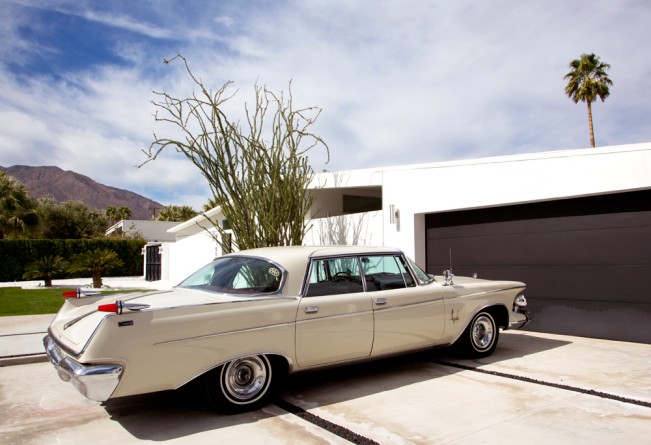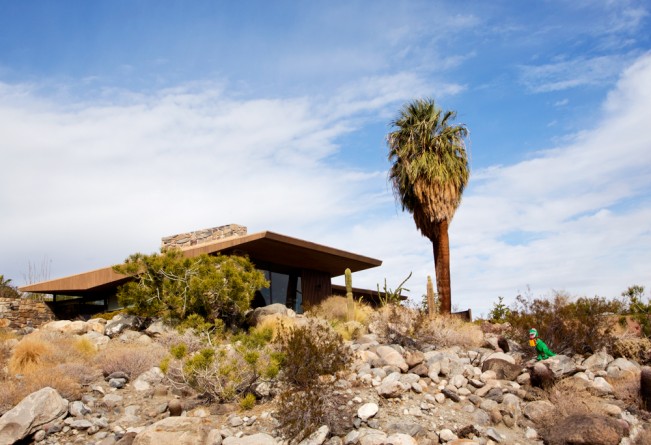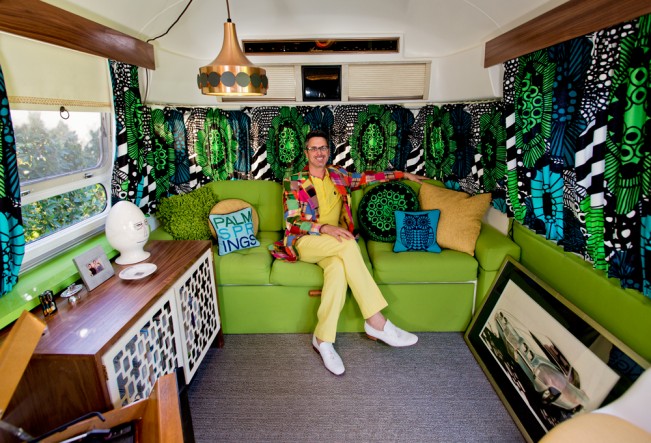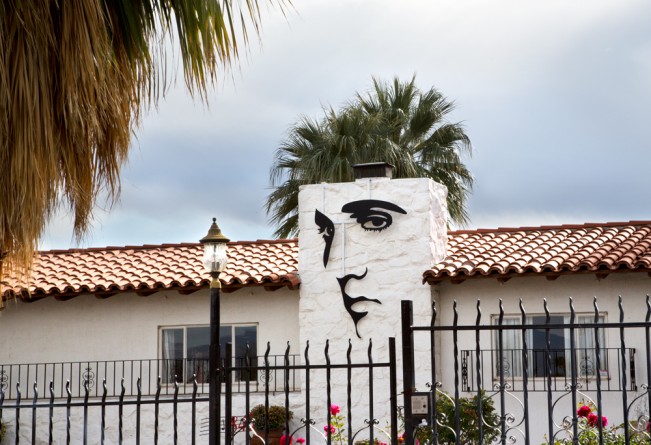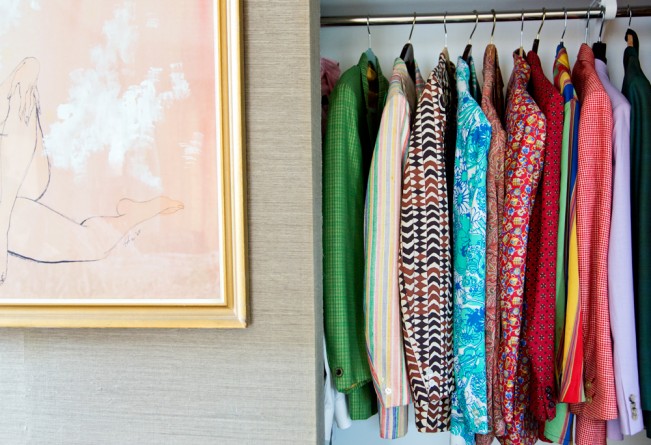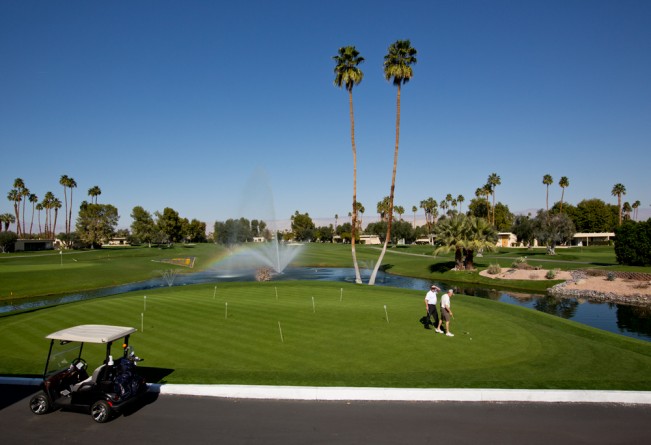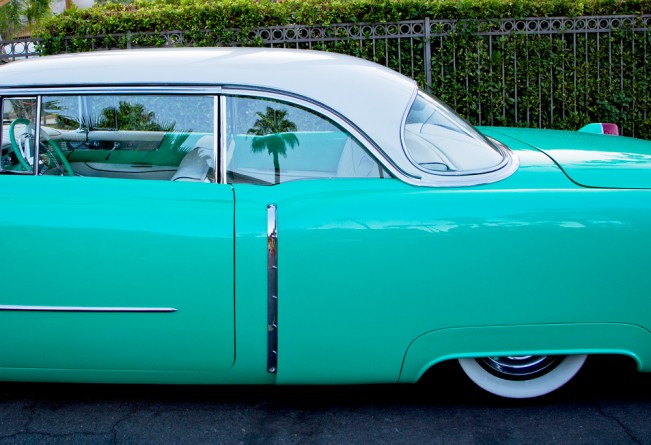Nancy Baron: The Good Life > Palm Springs
This week, Lenscratch looks at some new books published this fall..
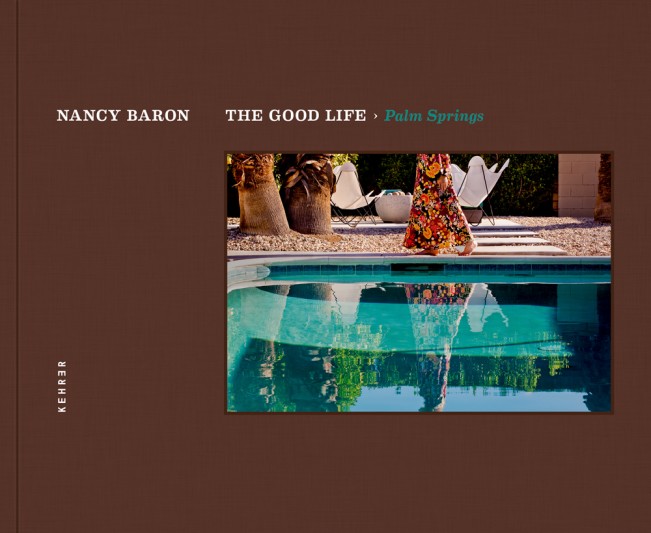
I am happy to celebrate photographer Nancy Baron’s first monograph, The Good Life > Palm Springs, published by Kehrer Verlag, not only because I love the work, but also because Nancy is a close friend, a fellow Six Shooter, and I had the great pleasure of writing the foreword for the book. I’ve looked at these photographs hundreds of times, and they only get more nuanced and interesting each time I see them, as I stated in an excerpt from the foreword:
Distilling the essence of this iconic destination isn’t easy, and getting it right takes a particular sensibility. One needs to have that poolside perspective, but also the historical appreciation of a shaded oasis built from dreams weighted with sand. Nancy finds herself with a front row seat, witnessing a city where two worlds collide — the legend of a Hollywood hideaway and its current renaissance of retro cool.
Nancy Baron doesn’t idealize Palm Springs, she celebrates it with humor and wry observations: the timeless cut of a red checkered sports jacket on a cherry red sports car; a bedroom of floor-to-ceiling leopard; iconic architecture made real by the morning paper waiting in its driveway. Her photographs prove she is not a tourist, but rather a participant observer of her own desert dream, with the ability to live the good life while paying attention to what makes it so special.
Nancy is about to open a solo exhibition at the DNJ Gallery this Saturday, September 6th- November 11th, 2014, with and opening reception at 6pm on September 6th in Santa Monica, California. Her book can be ordered here.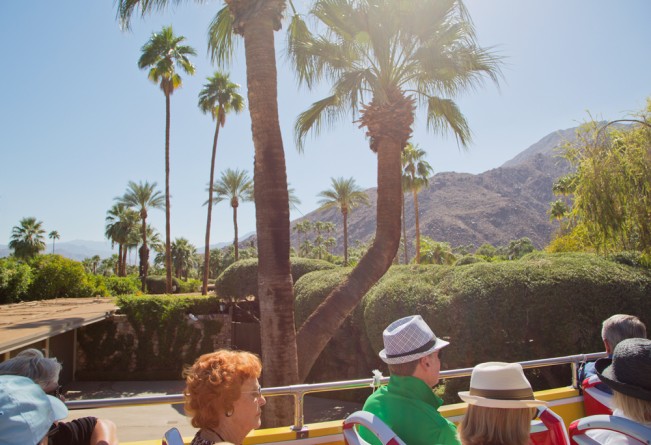 Nancy’s background in documentary filmmaking, has led to her current dedication to fine art documentary photography. She documents the world nearby, mostly in Los Angeles and Palm Springs, where she lives. Baron’s work is held in public and private collections, has been exhibited in galleries across the United States, and has been screened at the Palm Springs Photo Festival, Les Rencontres D’Arles, GuatePhoto in Guatemala, and Picture Society in Denver, Colorado. Her first monograph, THE GOOD LIFE > Palm Springs, was published in 2014 and is currently available worldwide
Nancy’s background in documentary filmmaking, has led to her current dedication to fine art documentary photography. She documents the world nearby, mostly in Los Angeles and Palm Springs, where she lives. Baron’s work is held in public and private collections, has been exhibited in galleries across the United States, and has been screened at the Palm Springs Photo Festival, Les Rencontres D’Arles, GuatePhoto in Guatemala, and Picture Society in Denver, Colorado. Her first monograph, THE GOOD LIFE > Palm Springs, was published in 2014 and is currently available worldwide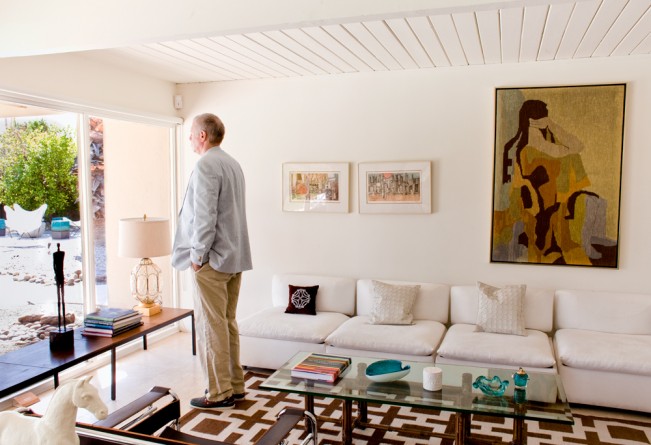
Congratulations on the book, can you tell us how it came about?
Thanks, Aline – and many thanks for your interest in The Good Life. I attended the Photolucida portfolio reviews in Portland in 2013. My very first review there was with Alexa Becker, the acquisitions editor for Kehrer Verlag in Heidelberg, Germany. Alexa responded to The Good Life and we quickly moved forward to publish the book. It was a fortuitous meeting in more ways than one, as everyone at Kehrer has been great to work with.
I just have to add how honored I am that you agreed to write the foreword to the book, Aline.
If you’re asking what initially attracted me to Palm Springs as a place, it was the mountains, the desert landscape, the soothing warm air, and the resorts. My first visit was in the middle of a brutal Chicago winter (where I spent the first half of my life.) I thought I’d landed in paradise. After I moved to L.A., the idea of driving an hour and forty-five minutes from my home to this beautiful oasis was, pretty much, heavenly.
When I became a part time resident in 2006, I was blown away by the town and how much more there is to it than I had ever expected – or seen – in all my years as an occasional tourist there. I was fascinated with the Mid-century modern design aesthetic and its history. I loved learning about the architects and the way that the desert landscape, combined with the climate and the geographic location of Palm Springs influenced them. It’s such a rich environment with endless opportunities for discovery. Paradoxically, it’s the perfect place to do nothing – to just “be” in the desert and let its mystical energy work its magic.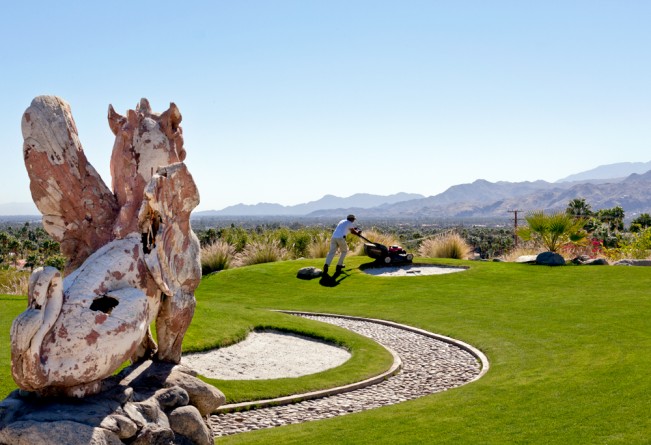 You truly have a unique perspective on a city that has been well documented. What do you think sets your approach apart?
You truly have a unique perspective on a city that has been well documented. What do you think sets your approach apart?
The images of TGL>PS document my Palm Springs discoveries as a resident. They are meant to show, not just the town as a place, but the way that people live in this place. Regardless of how sparsely a frame might be populated, there is always something personal about the scene. Even in the empty room of The Vanity, we see a portrait of a man, and the sun-lit vanity where he groomed himself. It’s easy to sense the man in this place.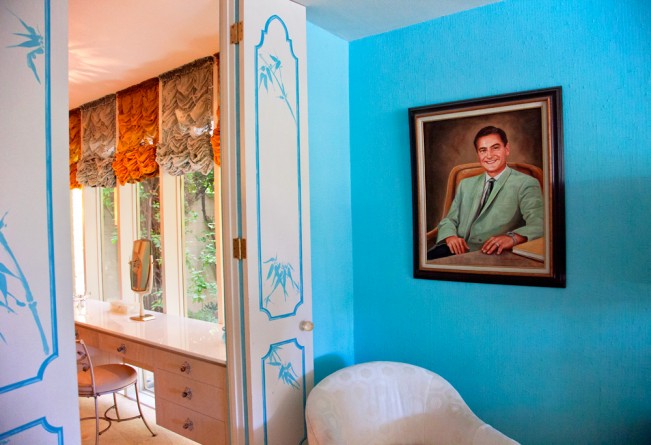 I’m somewhat of an introvert, so making the portraits is a great way to meet these singular, warm, and fun-loving desert dwellers and take a slower, closer look at the way they live. I have a great community of friends in Palm Springs who welcome me, and my camera, into their homes. We share an inside joke – but it’s not really a joke – it’s a passion for, and an idea of, a lifestyle and a unique place that we just “get”…and we’re all in on it; giving us Palm Springs types a special kind of bond that I think comes across in the photos.
I’m somewhat of an introvert, so making the portraits is a great way to meet these singular, warm, and fun-loving desert dwellers and take a slower, closer look at the way they live. I have a great community of friends in Palm Springs who welcome me, and my camera, into their homes. We share an inside joke – but it’s not really a joke – it’s a passion for, and an idea of, a lifestyle and a unique place that we just “get”…and we’re all in on it; giving us Palm Springs types a special kind of bond that I think comes across in the photos.
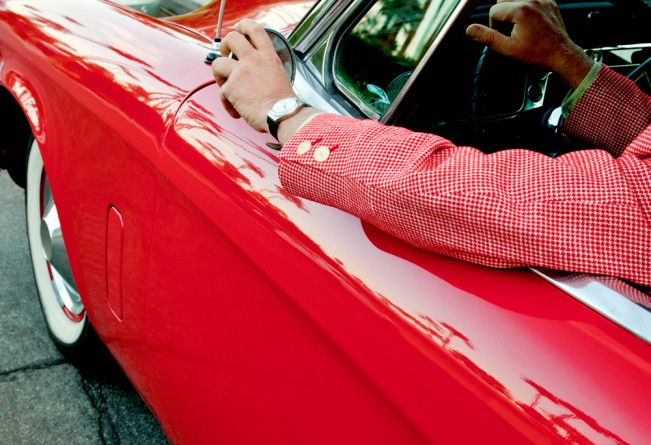 What have you learned from exploring Palm Springs from the inside out?
What have you learned from exploring Palm Springs from the inside out?
I’ve been reminded how much there is to learn about a place if you the have the luxury of time and the patience to peel back the layers. It’s so gratifying to have found this deceptively simple small town – exciting and peaceful, at the same time – that engages all of my senses.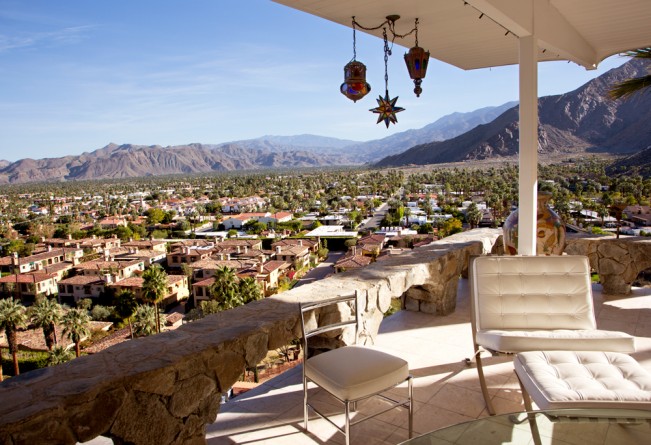
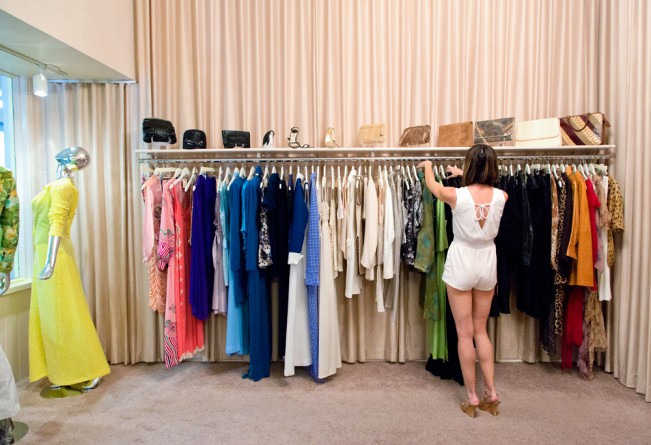 Can you share a story about one of your shoots?
Can you share a story about one of your shoots?
My friend, Lynda Keeler, who also lives near me in L.A. called me one day to tell me that there was a weekend-long estate sale at the Liberace Estate – and that I should grab my camera and get over there. When I arrived, the place was packed with people – some gawking, some buying – mostly quietly reverent, except for a man, still in his bike helmet, playing the grand piano. There were some items that had belonged to Liberace, but also items that had come from other estates. The Liberace provenance was clearly marked.
Even with the crowd, and the parcity of personal effects, Liberace’s one-time presence was very strong. The house was decorated as it had been when he lived there – and this was the house where he had passed away. The estate, called The Cloisters, had small guesthouses that were built at a time when the property was used as an inn. The leopard room was one of these houses. I didn’t want to draw attention to myself or ask people to clear the scene, so I stood with my camera ready for an eternity, waiting for a clear shot. Although the room appears empty, it was full of life and the ghost of life.
The estate was sold that weekend and has been restored to its original state, which, I hear, shows no trace of the distinctive Liberace stamp.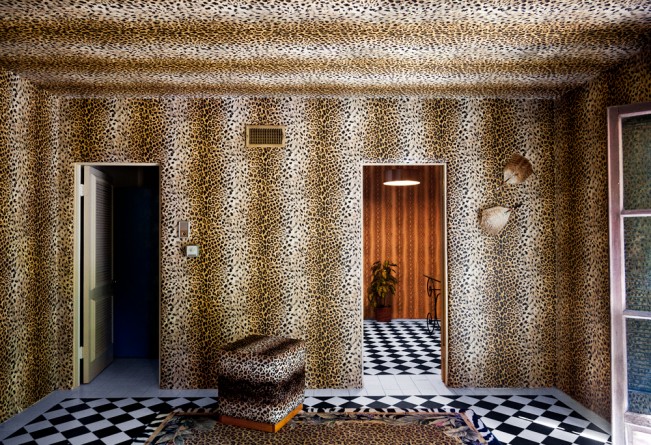 What has been the favorite house that you’ve shot?
What has been the favorite house that you’ve shot?
I’m not being diplomatic when I say I love them all. They each have such strong personalities. If I have to choose a favorite, it would be the home of Mike and Bob, the couple sitting next to their white grand piano. Sadly, Mike (the lovely woman of the pair) has passed away, but what a special couple they were. Their living room is decorated for most of the holidays, year round. The gold decoration on the piano is for New Years and you can see part of an Easter bunny on the sofa. The art…everything is in vibrant colors. It was such a happy home.
 How did you get started as a documentary photographer?
How did you get started as a documentary photographer?
I love documentary films and I worked on them, as well as commercials and feature films at one time. While working at being a full-time mother, I started studying still photography, with the idea that, when my kids left home, I’d make still documentaries. The idea of a small, intimate process – as opposed to a big production really appealed to me. Although the medium suits me well, I have to admit, I’m tempted to get back to documentary filmmaking, but in the short form, on a small scale.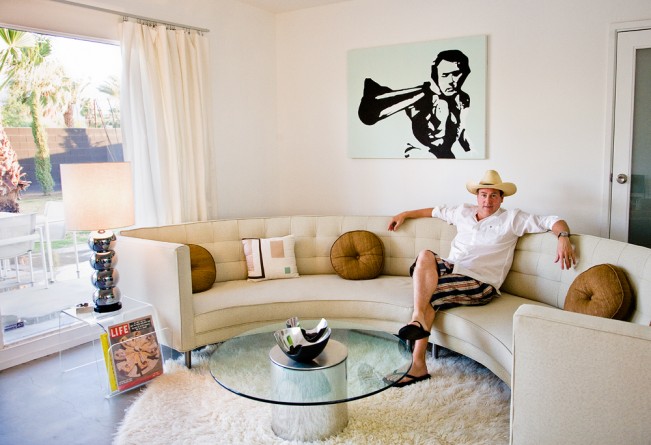 Will you continue to make work in or about Palm Springs?
Will you continue to make work in or about Palm Springs?
I have eight other bodies of work and two more in progress, but I doubt I’ll ever stop documenting Palm Springs. For such a small town, there is an endless amount of visual treasures and sharing them is a driving force for me. I’m constantly trying to describe the things I discover and, well, you just have to see it to believe it.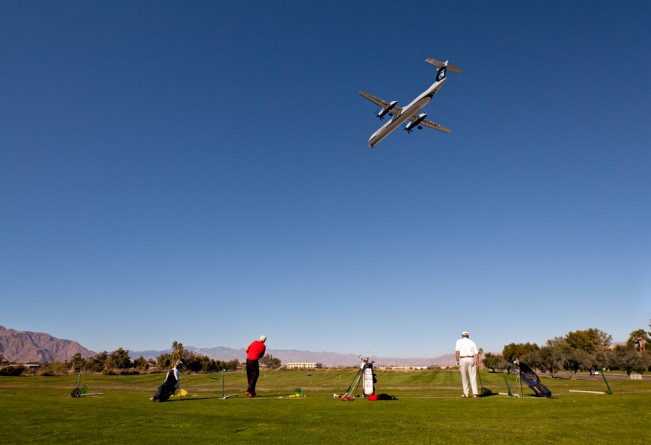 And finally, what is your perfect day?
And finally, what is your perfect day?
That would be any day in which my loved ones are well and happy – especially if the day includes a bag of chips.
Posts on Lenscratch may not be reproduced without the permission of the Lenscratch staff and the photographer.
Recommended
-
Paccarik Orue: El MuquiDecember 9th, 2025
-
Lauri Gaffin: Moving Still: A Cinematic Life Frame-by-FrameDecember 4th, 2025
-
Dani Tranchesi: Ordinary MiraclesNovember 30th, 2025
-
Art of Documentary Photography: Elliot RossOctober 30th, 2025
-
The Art of Documentary Photography: Carol GuzyOctober 29th, 2025

